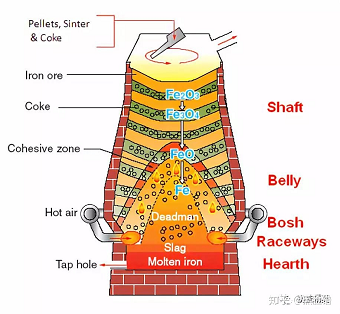High-performance carbon brick for blast furnace
May 18, 2022
The density of carbon bricks is also the bulk density of carbon bricks, which refers to the mass per unit volume of carbonaceous refractory bricks. The volume density index of carbon bricks is an important indicator of the density of carbon bricks. The middle is used as a test to judge the degree of sintering of carbon bricks. The higher the density of carbon bricks, the better the corrosion resistance of slag. Generally, the density of carbon bricks is expressed as g/cm3 or kg/m3. Blast furnace carbon bricks of different materials have different physical and chemical indicators and different bulk densities.
According to different physical and chemical indicators, the bulk density is 2.7-2.85g/cm3; The density of blast furnace carbon bricks is one of the important reference indicators for customers to purchase carbon bricks. Carbon bricks for different purposes have different physical and chemical indicators and different bulk density requirements.

There are two factors that affect the bulk density of blast furnace carbon bricks: one is the particle size of refractory raw materials and the bulk density of raw materials; the other is the control of the production process. Therefore, when producing blast furnace carbon bricks, it is necessary to strictly screen the grade of raw materials and control the particles, control the pressure of the brick press to press the bricks during the production process, and reasonably control the firing of blast furnace carbon bricks.
When purchasing blast furnace carbon bricks, it is necessary to provide more physical and chemical indicators, such as main component content, compressive strength, flexural strength, etc., in order to know whether blast furnace carbon bricks can really be used in industrial kilns.
Relevant information
-

Main properties of magnesium oxide refractory
Performance characteristics of magnesia refractories and other basic refractories Performance characteristics of magnesia refractories and other basic refractories Refractories containing more than 80% ... -

What properties of lightweight insulation fire clay bricks can be improved by the addition of kyanite?
Lightweight insulation fire clay bricks are a kind of shaped refractory material with clay as the main raw material, which is processed, shaped, dried, and calcined with clay. on the kiln. Due to the r ... -

How is the effect of white fused alumina abrasive used in refractory materials?
After mixing, forming, drying, and firing at high temperature in a shuttle kiln. The product has the characteristics of high refractoriness, good thermal shock stability of white corundum, high high te ... -

Characteristics of refractory magnesia chrome bricks for lime kiln
Lime kilns are mainly classified into square kilns and circular kilns. According to the classification of fired products, they can be divided into lime kilns, ceramic kilns, cement kilns, glass kilns, ...

